Comparison tables can be handy when it comes to getting a quick overview of a specific topic. Below are eight comparison tables from the areas of Artificial Intelligence, Data Science, IoT, and Cloud Computing.
Inhalt
1. Edge Computing vs. Cloud Computing
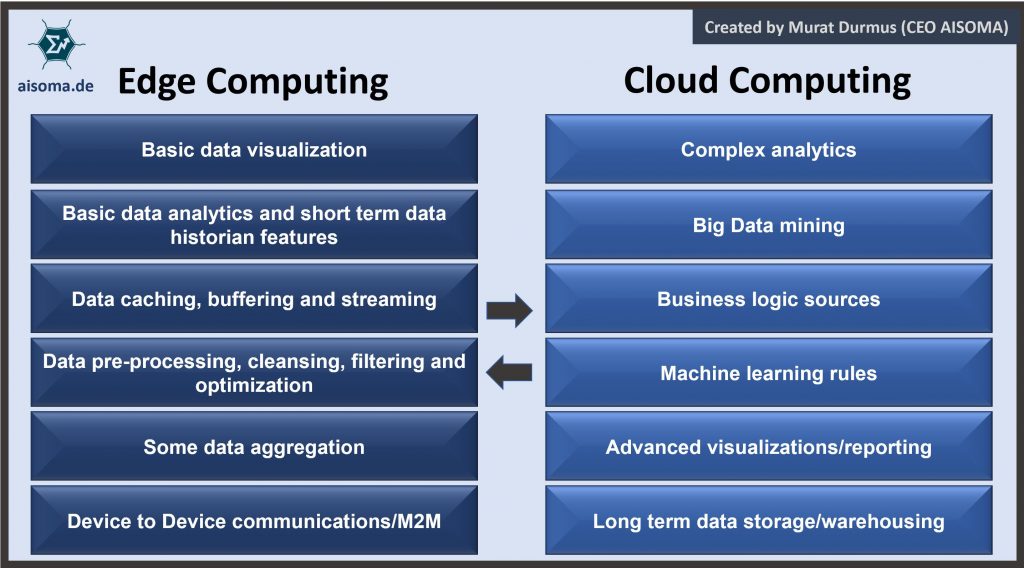
2. Comparison of machine learning methods
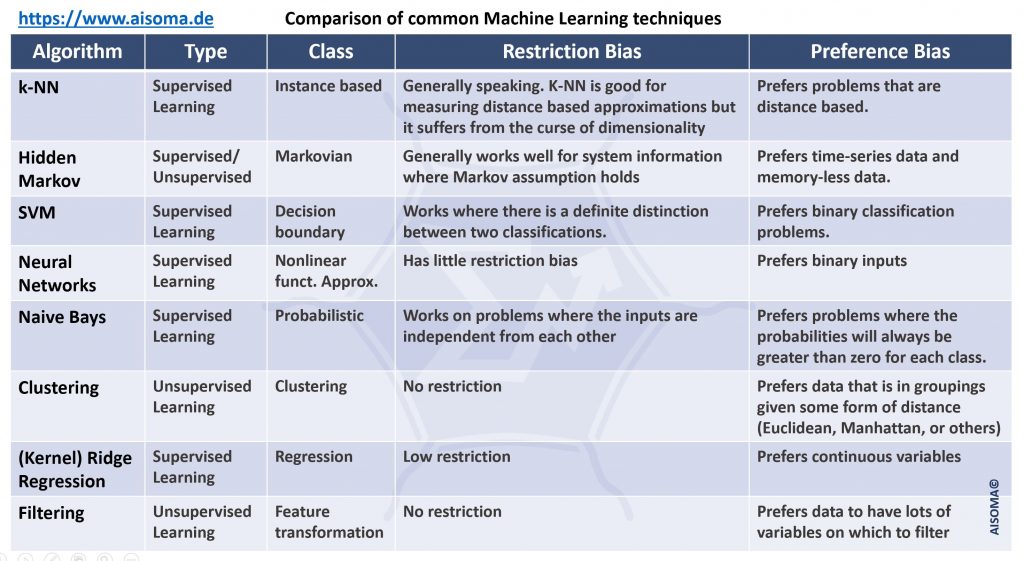
Machine learning explores the study and construction of algorithms that can learn from and make predictions on data. Such algorithms operate by building a model from an example training set of input observations in order to make data-driven predictions or decisions expressed as outputs, rather than following strictly static program instructions. (Wikipedia)
3. Comparison of open-source IoT platforms
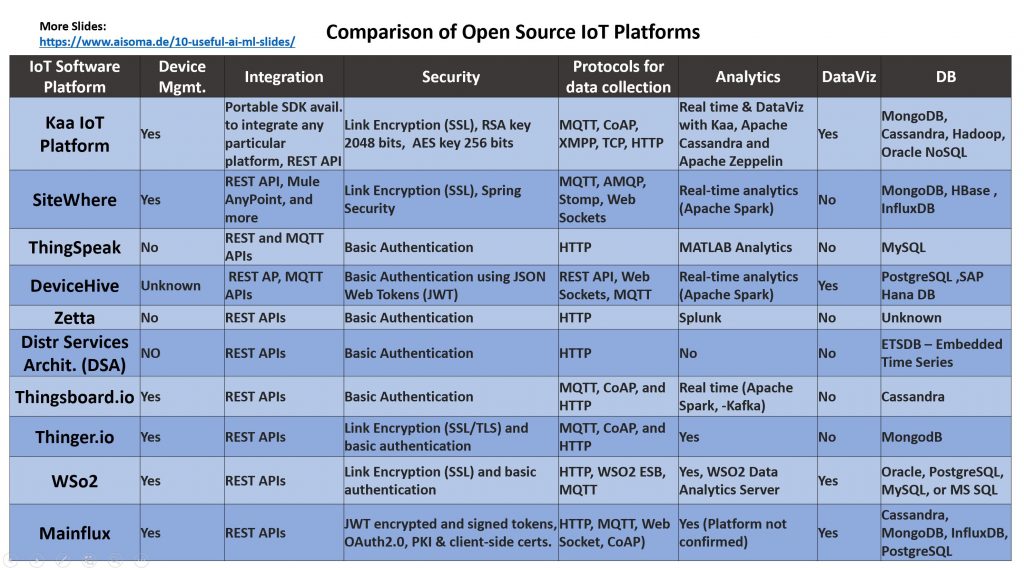
The Internet of Things (IoT) is a system of interrelated computing devices, mechanical and digital machines, objects, animals or people that are provided with unique identifiers (UIDs) and the ability to transfer data over a network without requiring human-to-human or human-to-computer interaction. (Wikipedia)
4. The main differences between Data Science and Business Intelligence
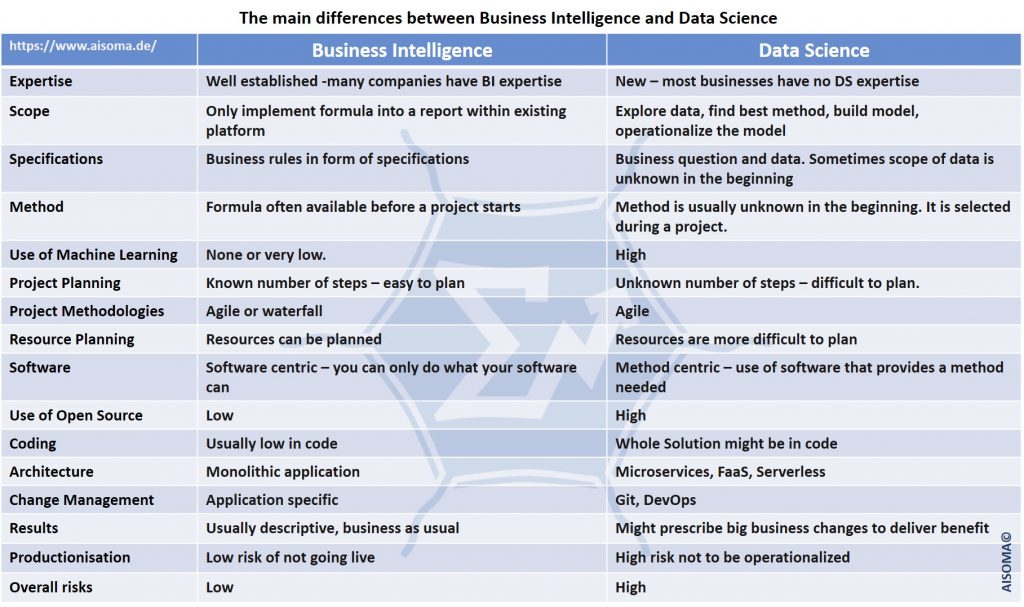
Data Science
Data science is a multi-disciplinary field that uses scientific methods, processes, algorithms, and systems to extract knowledge and insights from structured and unstructured data. Data science is the same concept as data mining and big data: “use the most powerful hardware, the most powerful programming systems, and the most efficient algorithms to solve problems” (Wikipedia)
Business Intelligence
Business intelligence (BI) comprise the strategies and technologies used by enterprises for the data analysis of business information. BI technologies provide historical, current and predictive views of business operations. Common functions of business intelligence technologies include reporting, online analytical processing, analytics, data mining, process mining, complex event processing, business performance management, benchmarking, text mining, predictive analytics, and prescriptive analytics. (Wikipedia)
5. Comparison of Classification Algorithms
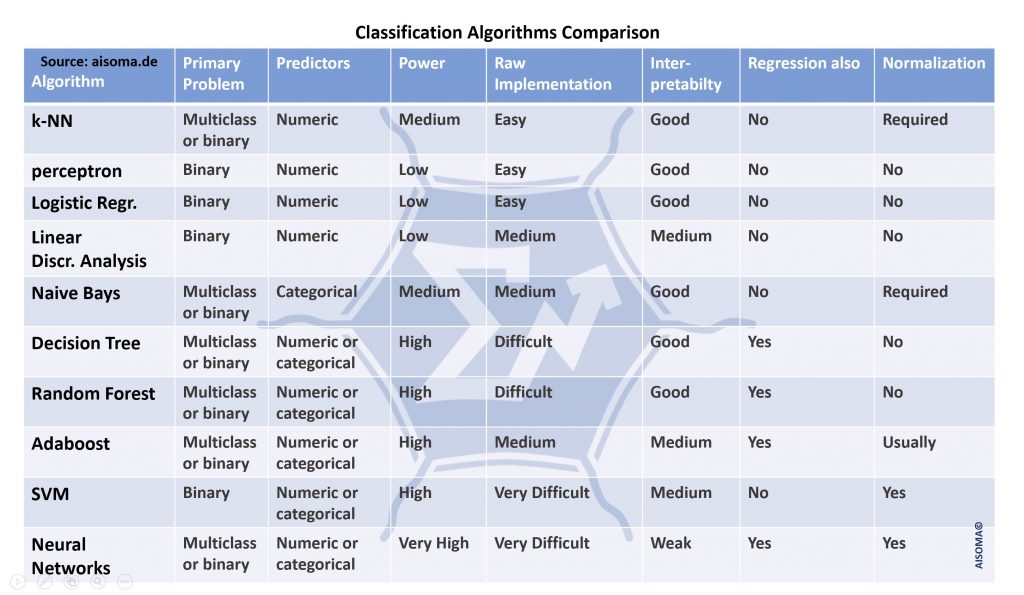
In machine learning and statistics, classification is the problem of identifying to which of a set of categories (sub-populations) a new observation belongs, on the basis of a training set of data containing observations (or instances) whose category membership is known. Examples are assigning a given email to the “spam” or “non-spam” class, and assigning a diagnosis to a given patient based on observed characteristics of the patient (sex, blood pressure, presence or absence of certain symptoms, etc.). Classification is an example of pattern recognition. (Wikipedia)
6. Comparison of Deep Learning Frameworks
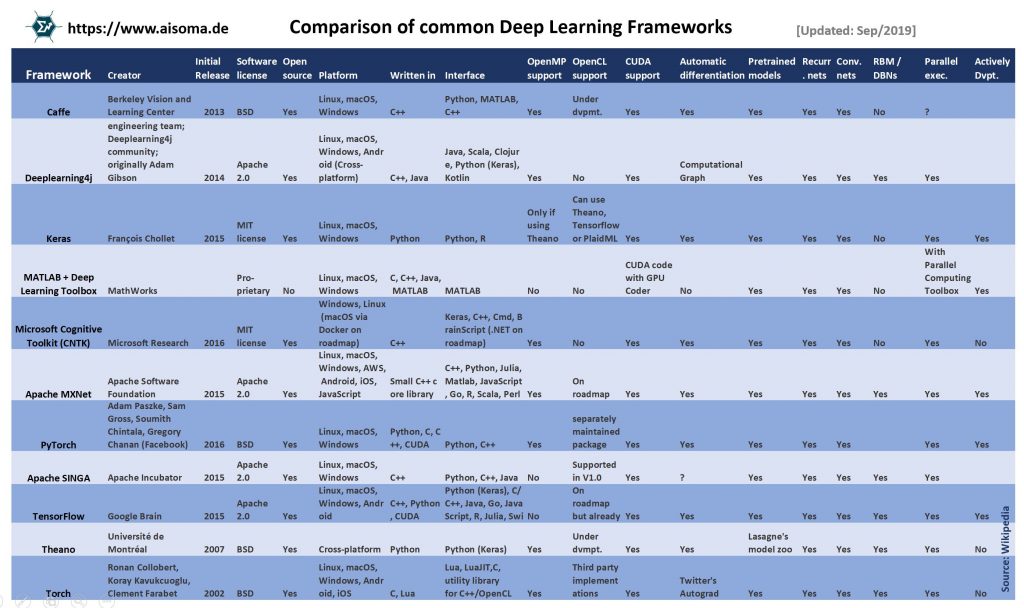
Deep learning (also known as deep structured learning or hierarchical learning) is part of a broader family of machine learning methods based on artificial neural networks. Learning can be supervised, semi-supervised or unsupervised.
Deep learning architectures such as deep neural networks, deep belief networks, recurrent neural networks and convolutional neural networks have been applied to fields including computer vision, speech recognition, natural language processing, audio recognition, social network filtering, machine translation, bioinformatics, drug design, medical image analysis, material inspection and board game programs, where they have produced results comparable to and in some cases superior to human experts. (Wikipedia)
7. Comparison of pre-trained models
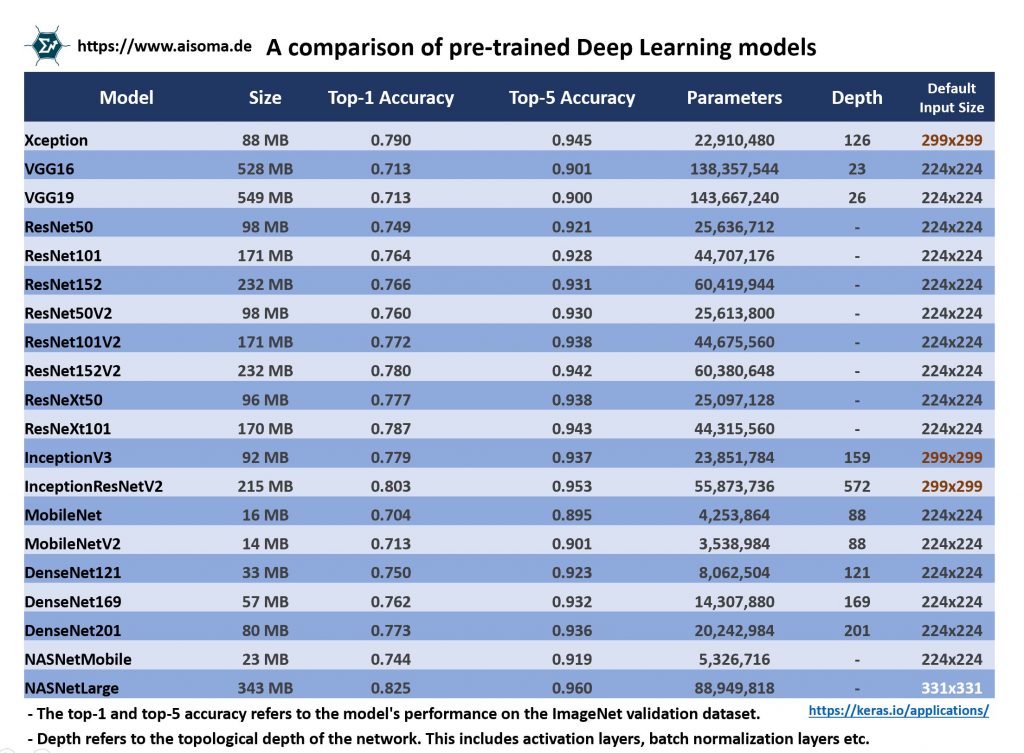
In computer vision, transfer learning is usually expressed through the use of pre-trained models. A pre-trained model is a model that was trained on a large benchmark dataset to solve a problem similar to the one that we want to solve. (Towards Data Science)
8. AWS, Azure, GCP Comparison
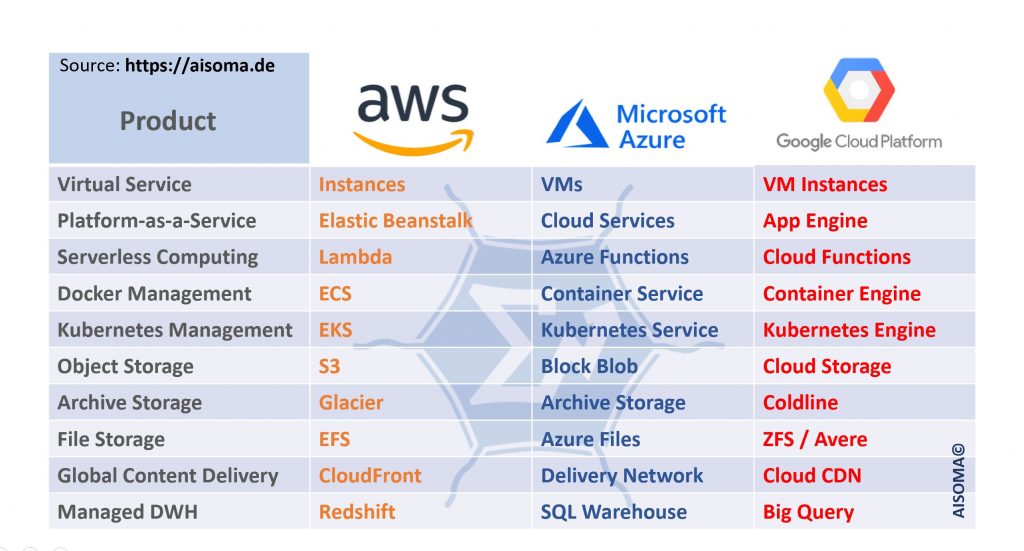
Cloud computing is the on-demand availability of computer system resources, especially data storage and computing power, without direct active management by the user. The term is generally used to describe data centers available to many users over the Internet. Large clouds, predominant today, often have functions distributed over multiple locations from central servers. If the connection to the user is relatively close, it may be designated an edge server. (Wikipedia)
9. RPA versus Conventional Technology
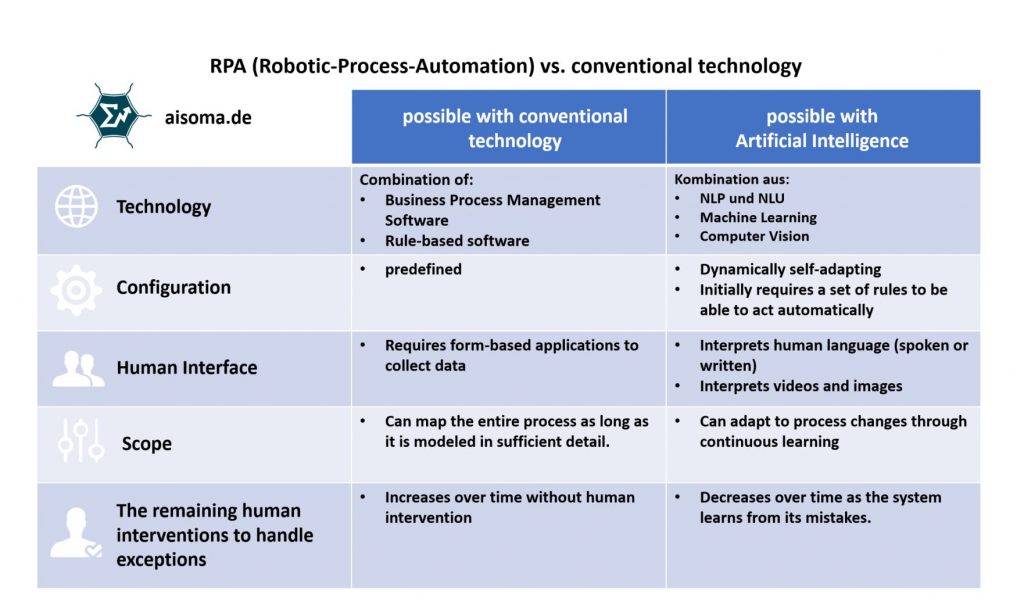
RPA Robotic process automation (or RPA) is an emerging form of business process automation technology based on the notion of metaphorical software robots or artificial intelligence workers.
In traditional workflow automation tools, a software developer produces a list of actions to automate a task and interface to the back-end system using internal application programming interfaces (APIs) or dedicated scripting language. In contrast, RPA systems develop the action list by watching the user perform that task in the application’s graphical user interface (GUI) and then perform the automation by repeating those tasks directly in the GUI. This can lower the barrier to the use of automation in products that might not otherwise feature APIs for this purpose. (Wikipedia)
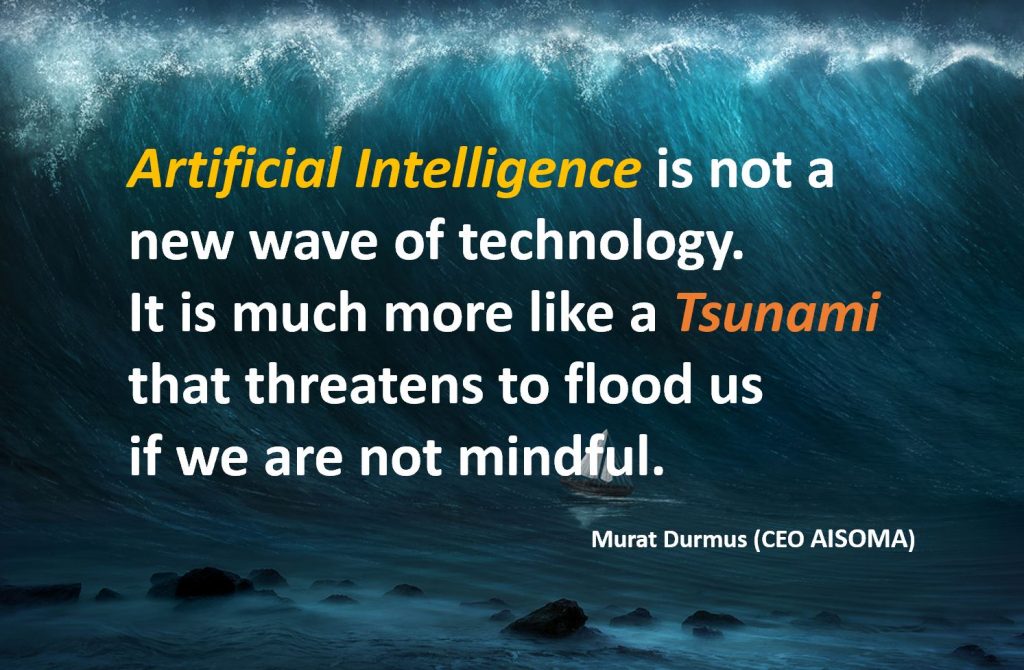
[bctt tweet=”Useful Comparison Tables for AI, Data Science, IoT & Cloud #AI #DataScience #IoT #CloudComputing” username=”AISOMA_AG”]
Further reading:
